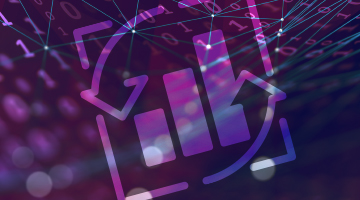Key Takeaways
- AI has evolved into an accessible technology with the potential to revolutionize industries and enhance efficiency.
- AI democratization aims to break down barriers and make AI accessible to a broader audience, including smaller businesses and regular users.
- AI democratization helps organizations become more inclusive, encourages innovation, and improves decision-making and employee engagement.
- Challenges of AI democratization include skills gaps, data security and compliance concerns, and the need to ensure the quality and reliability of AI outputs.
- To get started with AI democratization, organizations should develop user-friendly AI platforms, train their teams, and ensure widespread data accessibility.
Over the last year or so, artificial intelligence (AI) has evolved from something most people consider science fiction to an increasingly accessible technology anyone can use.
Thanks to the rise of tools like ChatGPT and DALL-E, AI has rapidly emerged as a transformative technology with the potential to revolutionize industries, enhance efficiency, and unlock new opportunities for businesses and individuals alike.
However, for many years, AI development, implementation, and usage was limited to large organizations and tech giants with substantial resources — the Microsofts, Googles, and Apples of the world — and, more specifically, the most technologically proficient employees who worked there.
Unlocking the full potential of AI starts with putting AI in the hands of more employees. To this end, the democratization of AI seeks to break down the barriers that have prevented many from using AI, making the technology accessible to a broader audience, including smaller businesses, startups, researchers, and regular technology users.
In this post, we’ll examine the concept of AI democratization, its benefits and challenges, and how to kickstart an initiative at your organization.

Table Of Contents
What is AI democratization?
AI democratization is the process of making AI technologies, tools, and capabilities accessible and usable by a more extensive and diverse group of people. It aims to lower the entry barriers to AI adoption, enabling organizations and individuals without extensive technical expertise to leverage AI for their specific needs.
By embracing AI democratization, organizations can empower users to take advantage of cutting-edge AI technologies, maximizing its benefits and accomplishing more at the office every day.
What are the benefits of AI democratization?
AI democratization delivers several benefits to organizations that prioritize it. For starters, AI democratization helps organizations become more inclusive. Instead of only letting the smartest technology wizards use modern AI tools, AI democratization ensures that all users can take advantage of AI — not just the privileged few. This evens the playing field and ensures that employees of all walks can use AI to augment the way they work.
Rolling AI out to more users also encourages innovation across industries. As smaller organizations and even non-technical employees begin experimenting with AI applications, it’s only a matter of time before more novel use cases and disruptive advancements emerge.
Other benefits of AI democratization include:
- Cost-effectiveness. By democratizing AI across the organization, companies can reduce the cost associated with AI implementation and get a bigger bank for their buck. Cloud-based AI services, open source tools, and pre-built AI models make AI adoption more affordable for businesses of all sizes.
- Improved decision-making. AI democratization helps organizations make better decisions faster. By integrating AI-driven insights into decision-making processes and operational workflows, organizations can make smarter decisions and develop data-driven strategies that lead to better and better business outcomes.
- Increased employee engagement. Who doesn’t like using modern tools designed to make life easier? When you roll out modern AI tools across the organization, you empower all of your employees to reach their full potential, without having to write a single line of code. This, in turn, increases employee engagement while strengthening retention — something that is critical in today’s difficult labor market.
What are the challenges of AI democratization?
While the benefits of AI democratization speak for themselves, it’s not without its challenges. Prior to rolling out AI initiatives across your company, it’s important to do your due diligence and make sure you understand exactly what you’re getting into. With that in mind, let’s take a look at some of the key challenges to consider while embarking on your next AI initiative — and what you can do to overcome them.
SKILLS GAPS
While democratizing AI increases accessibility, companies still need technical talent to administer the technology and ensure everything is working as designed. According to one recent report, a lack of talent is the biggest obstacle preventing organizations from maximizing their AI investments.
To make your AI initiative work, you need to bridge the skills gap by hiring security engineers and folks skilled in AI while also ensuring run-of-the-mill users have the necessary knowledge to use AI effectively and productively.
DATA SECURITY, COMPLIANCE
When rolling out AI tools to your entire organization, it’s important to prioritize responsible, safe AI usage. If you’re processing sensitive customer information or using AI to refine trade secrets and other intellectual property, you have to know where your data is stored and where it ends up. There are also regulatory compliance concerns, too; if your organization is using AI to process data governed by GDPR, HIPAA, or PCI, for example, it’s critical that you make sure you remain compliant with relevant regulations.
At the same time, you also need to do everything possible to avoid biases inherent in AI models and ensure your employees adhere to ethical AI practices. Otherwise, you may find out the hard way that your AI endeavors are causing more harm than good.
QUALITY AND RELIABILITY
While AI has come a long way in a short period of time, it’s still a relatively new technology and is known to be error-prone. For example, ChatGPT is famously known to cite made-up sources from time to time. After rolling out AI tools, it’s critical to remember that they are not a panacea, and you shouldn’t trust them 100% of the time.
While AI can certainly help your team cover more ground faster, be sure to double-check suggestions and outputs to ensure they are accurate. Otherwise, you might end up like these lawyers who submitted fake case law to a judge and were punished accordingly.
How to get started with AI democratization
Getting started with AI democratization requires the development and deployment of user-friendly AI platforms. The best tools require little to no coding and can be used just as easily as conducting a Google search.
After rolling out AI technology, spend some time training and educating your team. Make sure they know how the technology will make work easier, popular use cases, and challenges and concerns to keep in mind.
Making the most out of AI democratization requires widespread data accessibility. All employees need access to diverse, high-quality data sets, and they need to be able to access that data quickly and reliably. For this reason, it’s critical for organizations to consider the underlying computing infrastructure they rely on, as well as the data platforms that use to transmit data across applications.
We might be a bit biased, but we believe that Volt Active Data is the ideal data platform for applications that use artificial intelligence and machine learning to improve their performance. Find out why.



